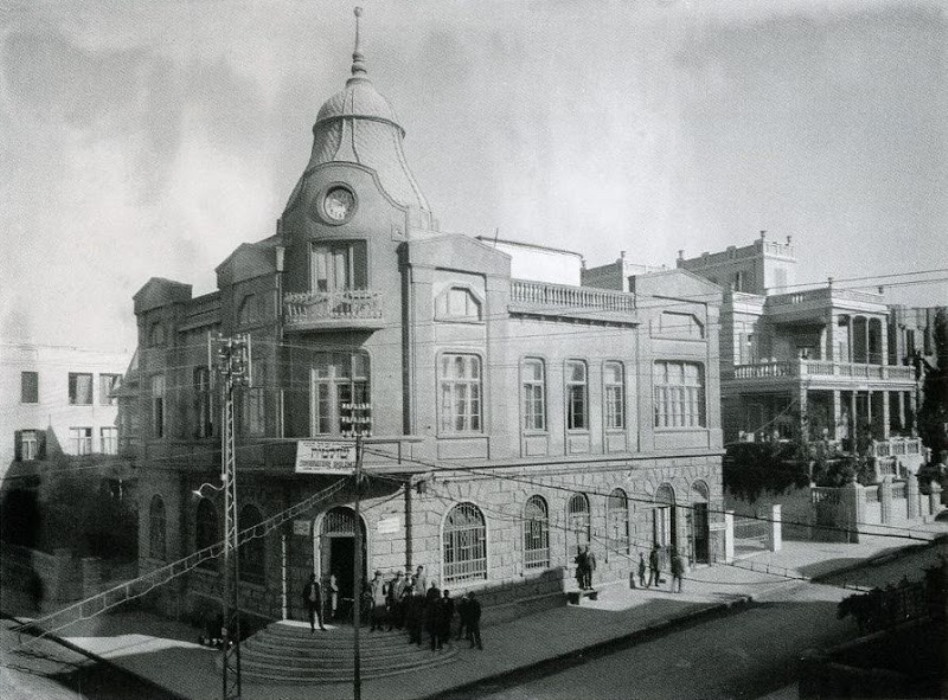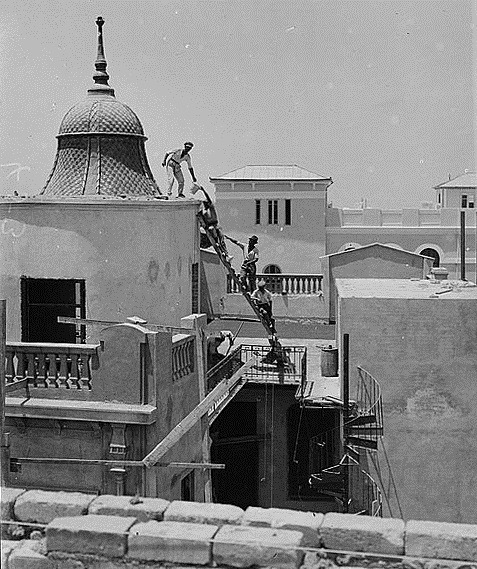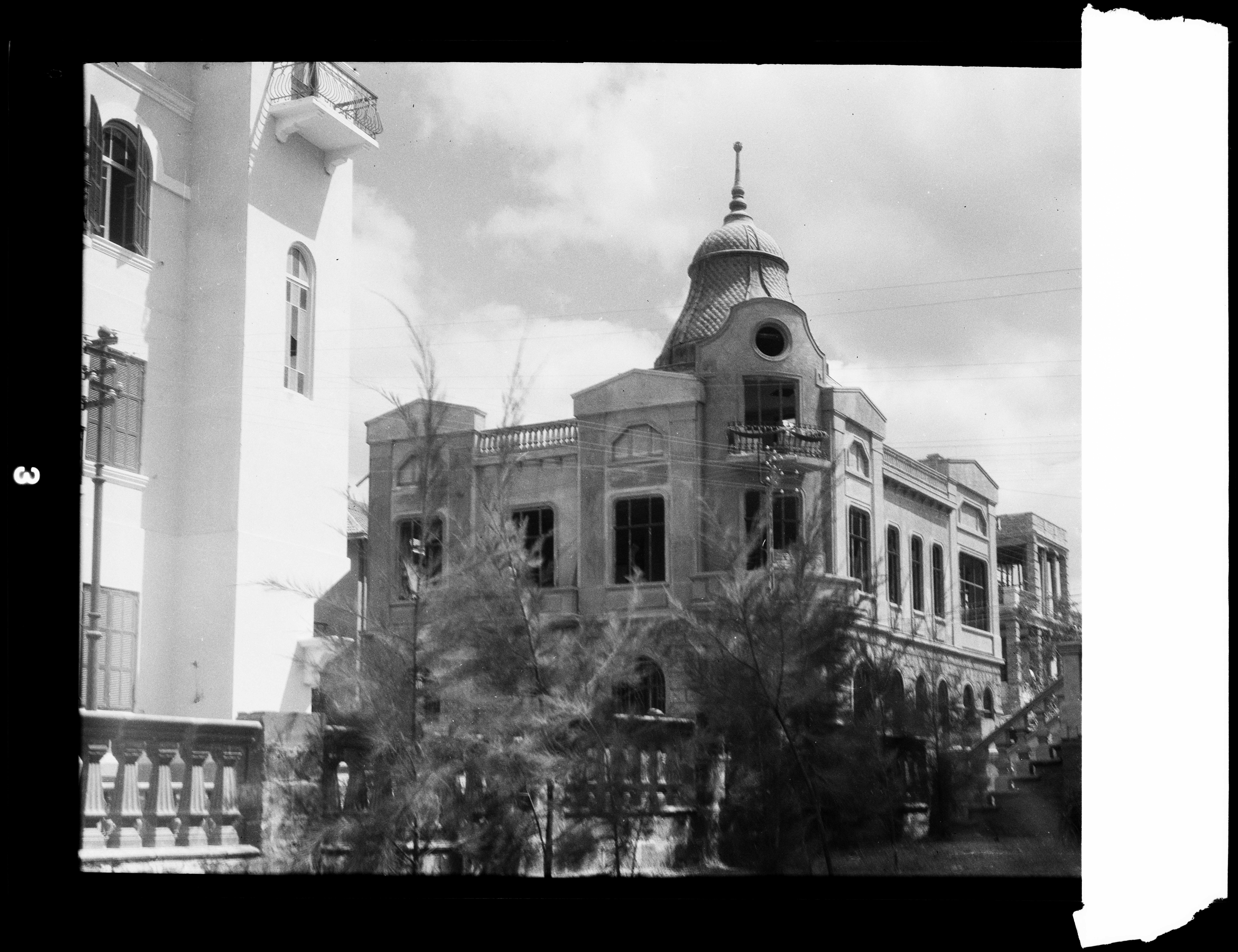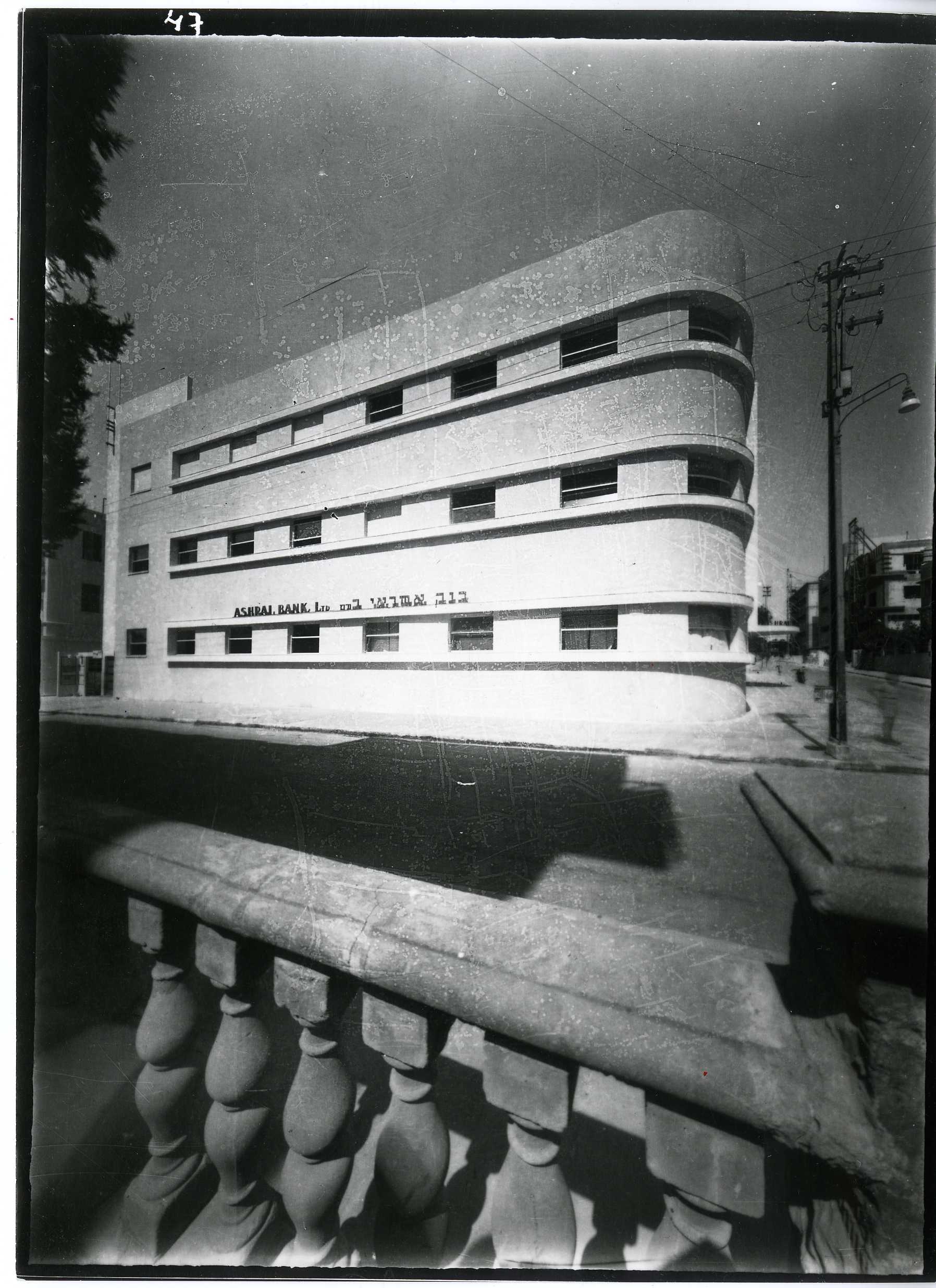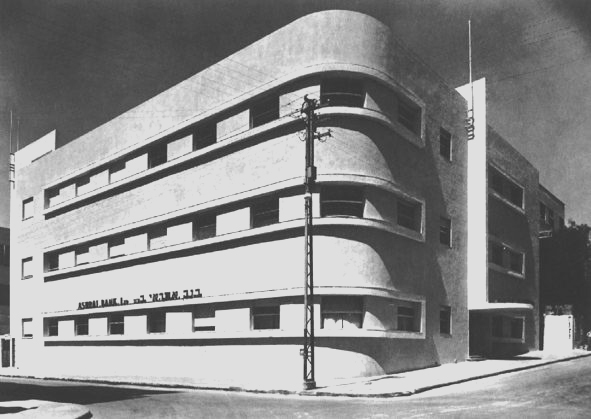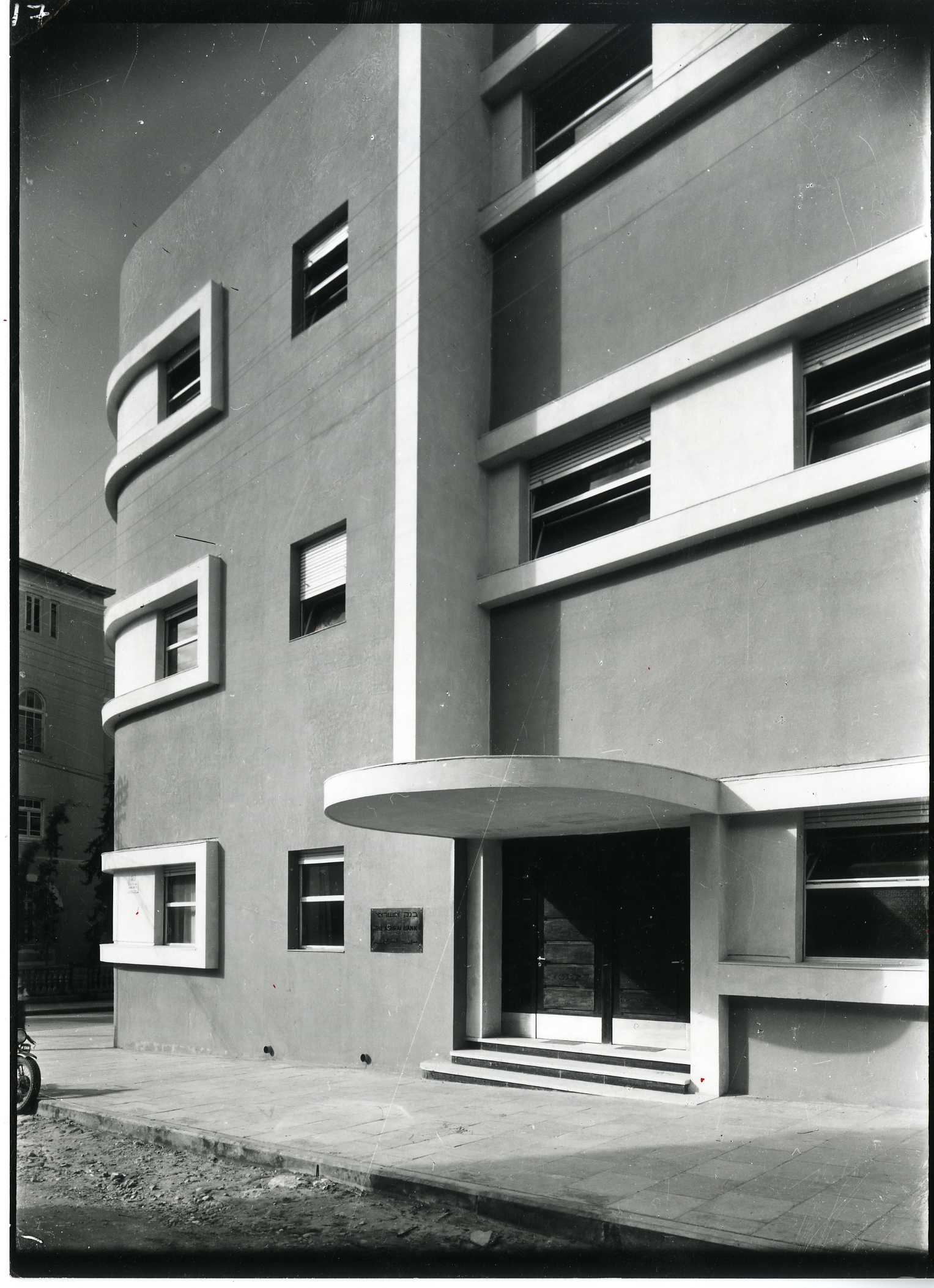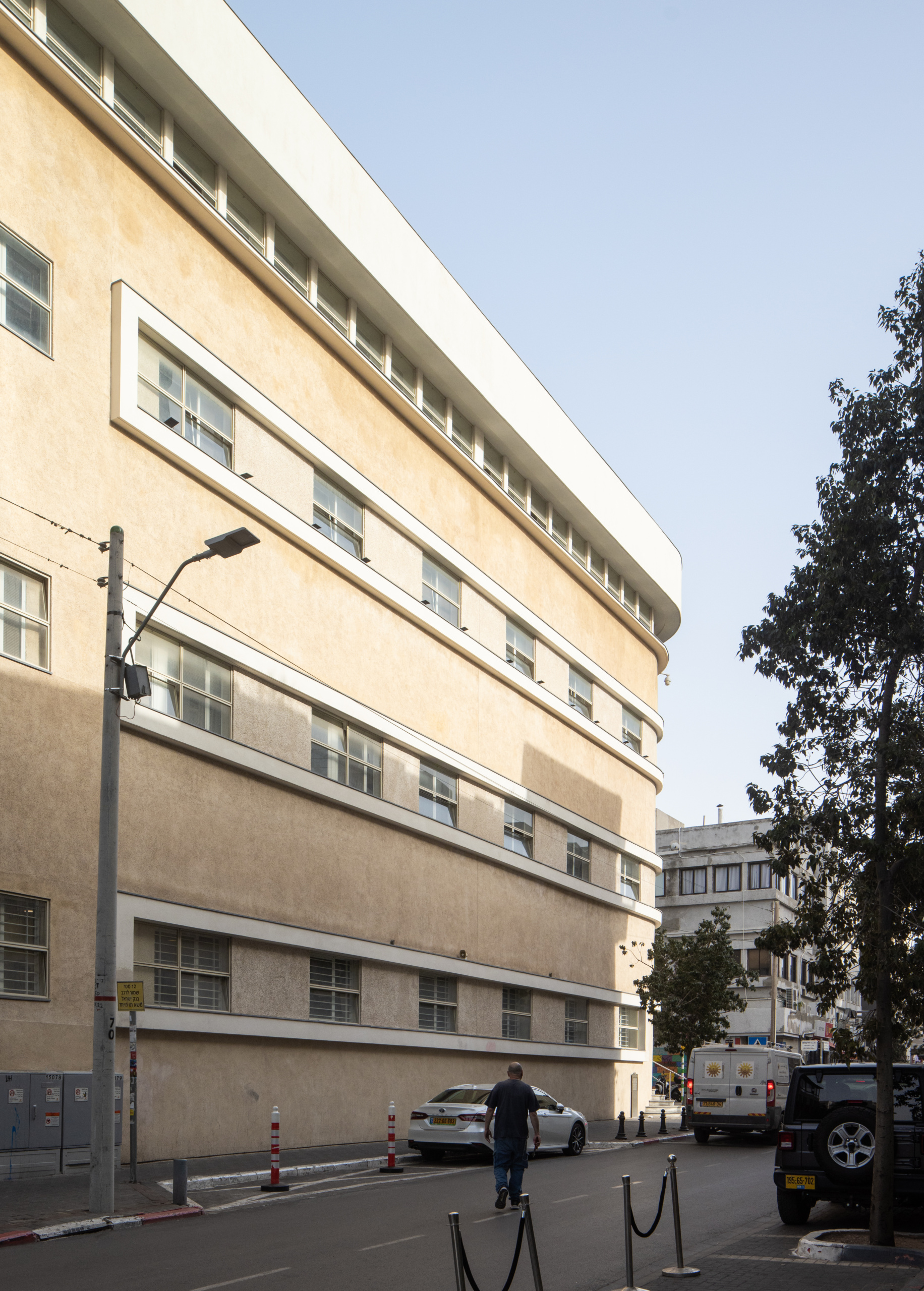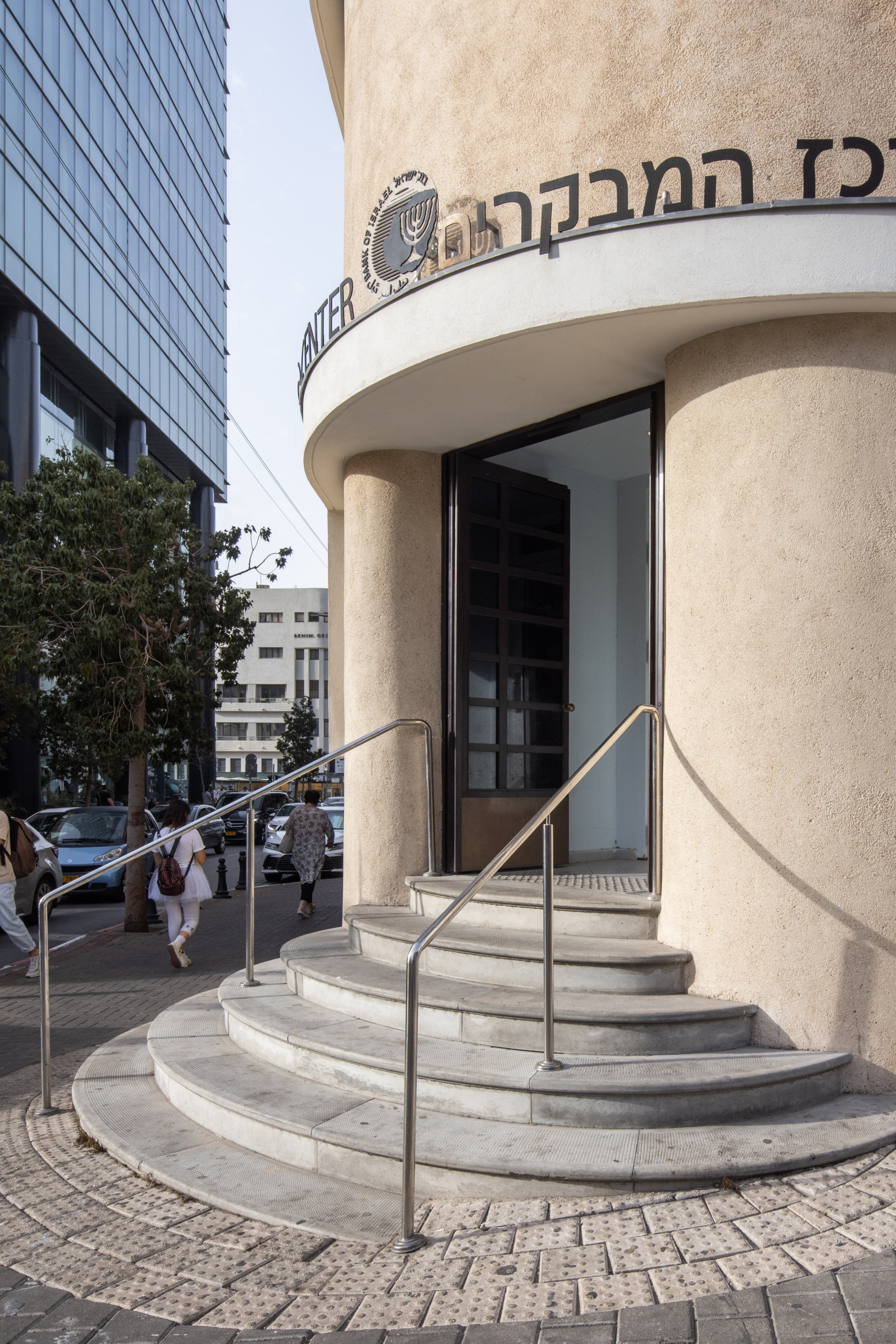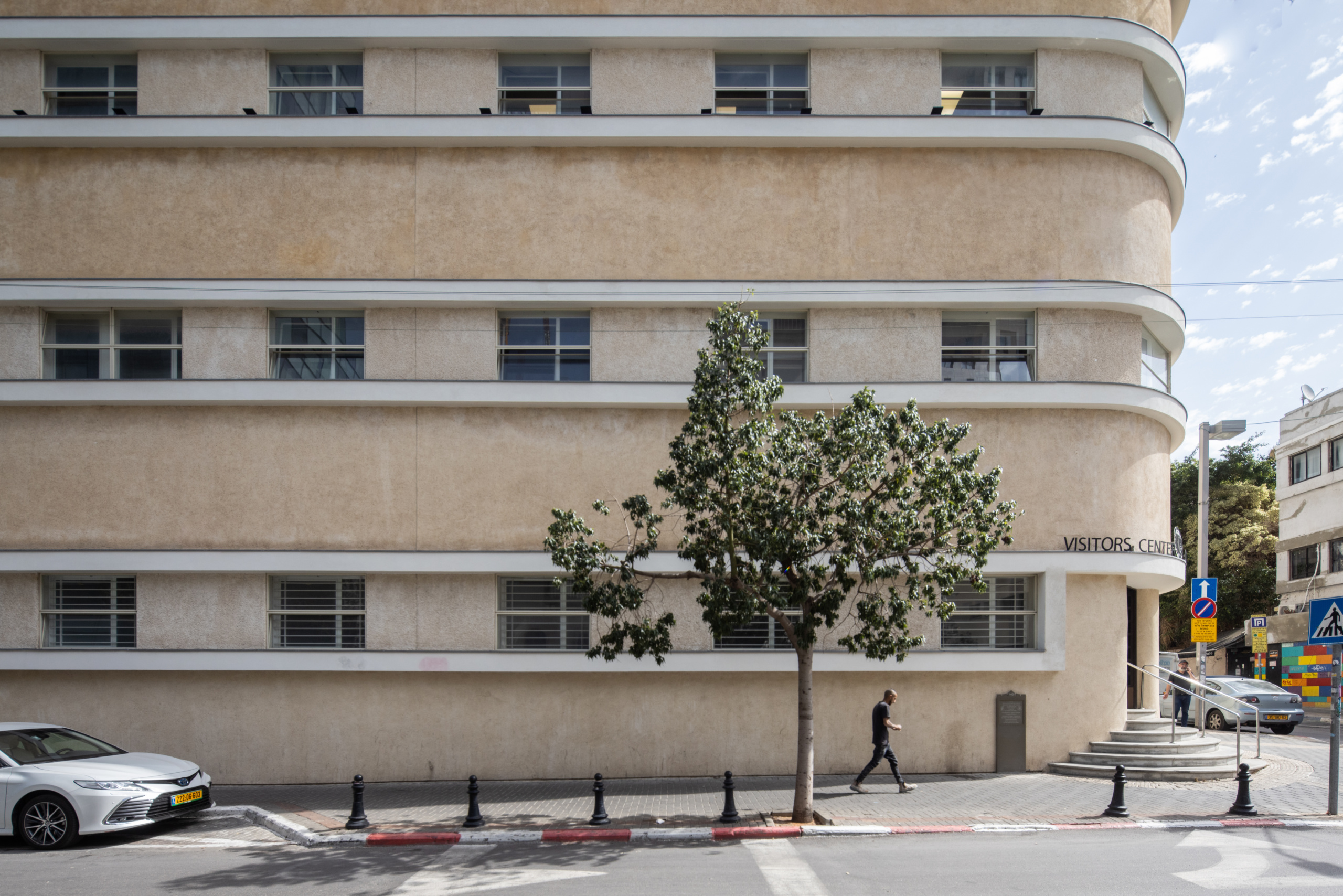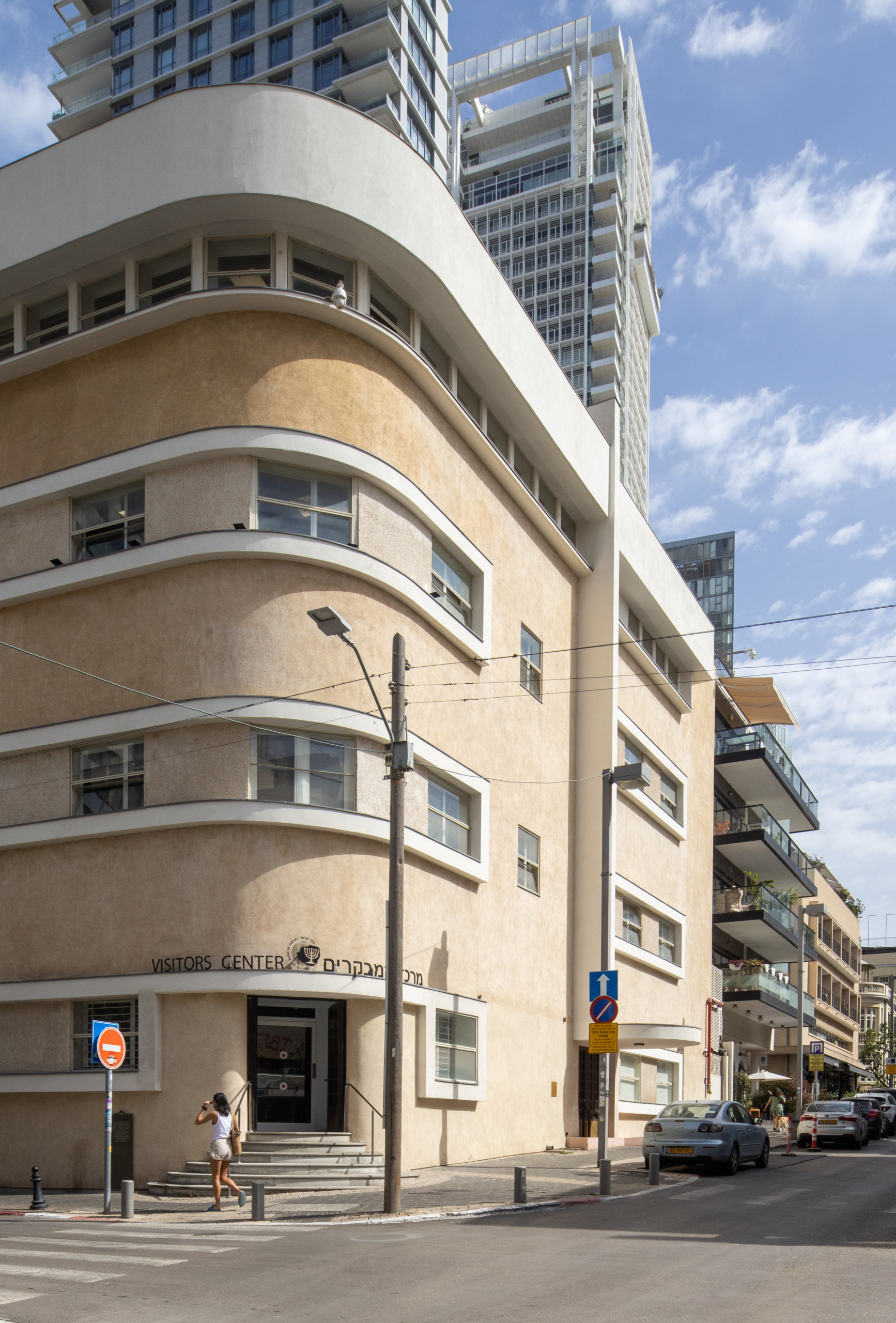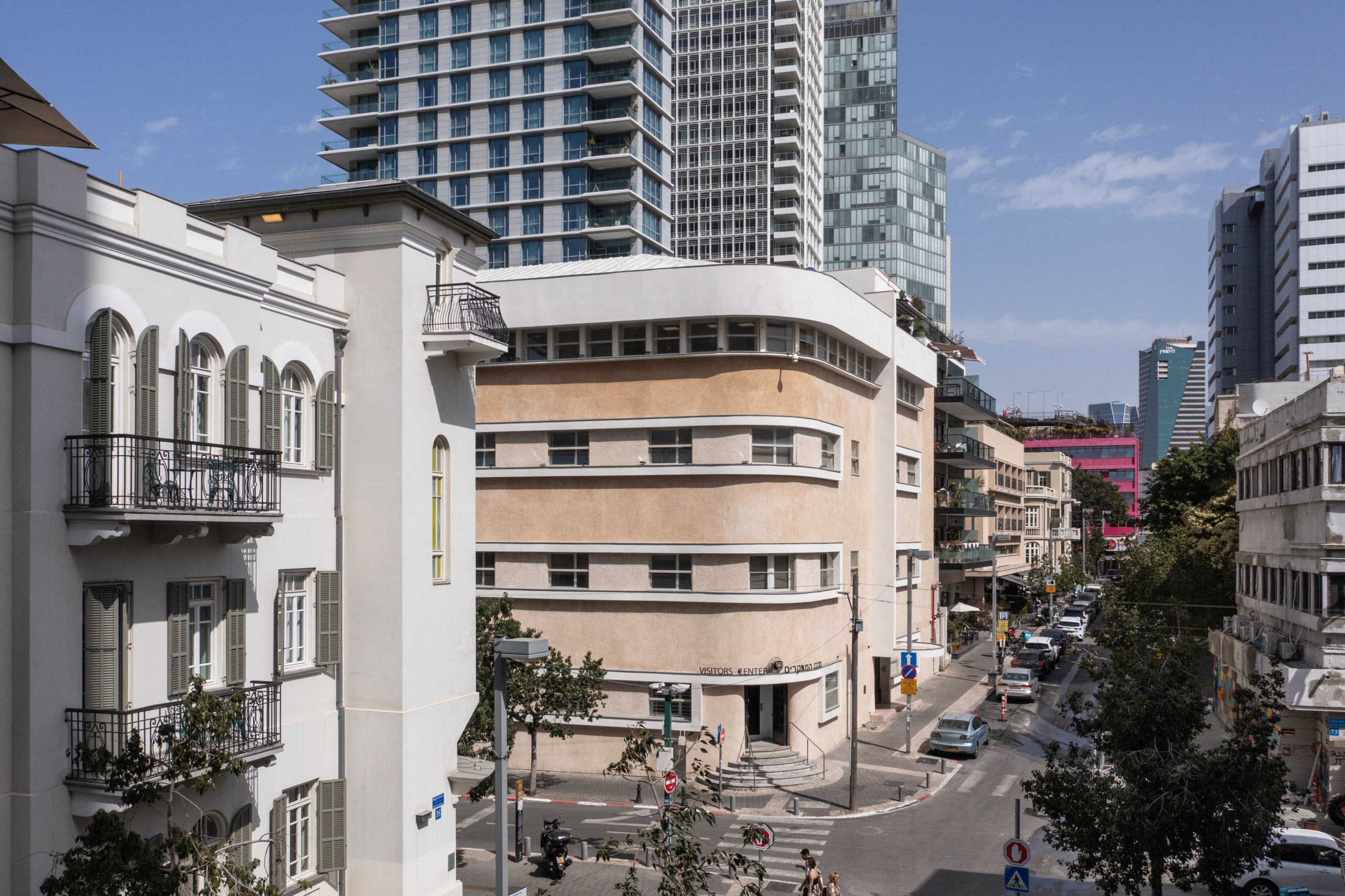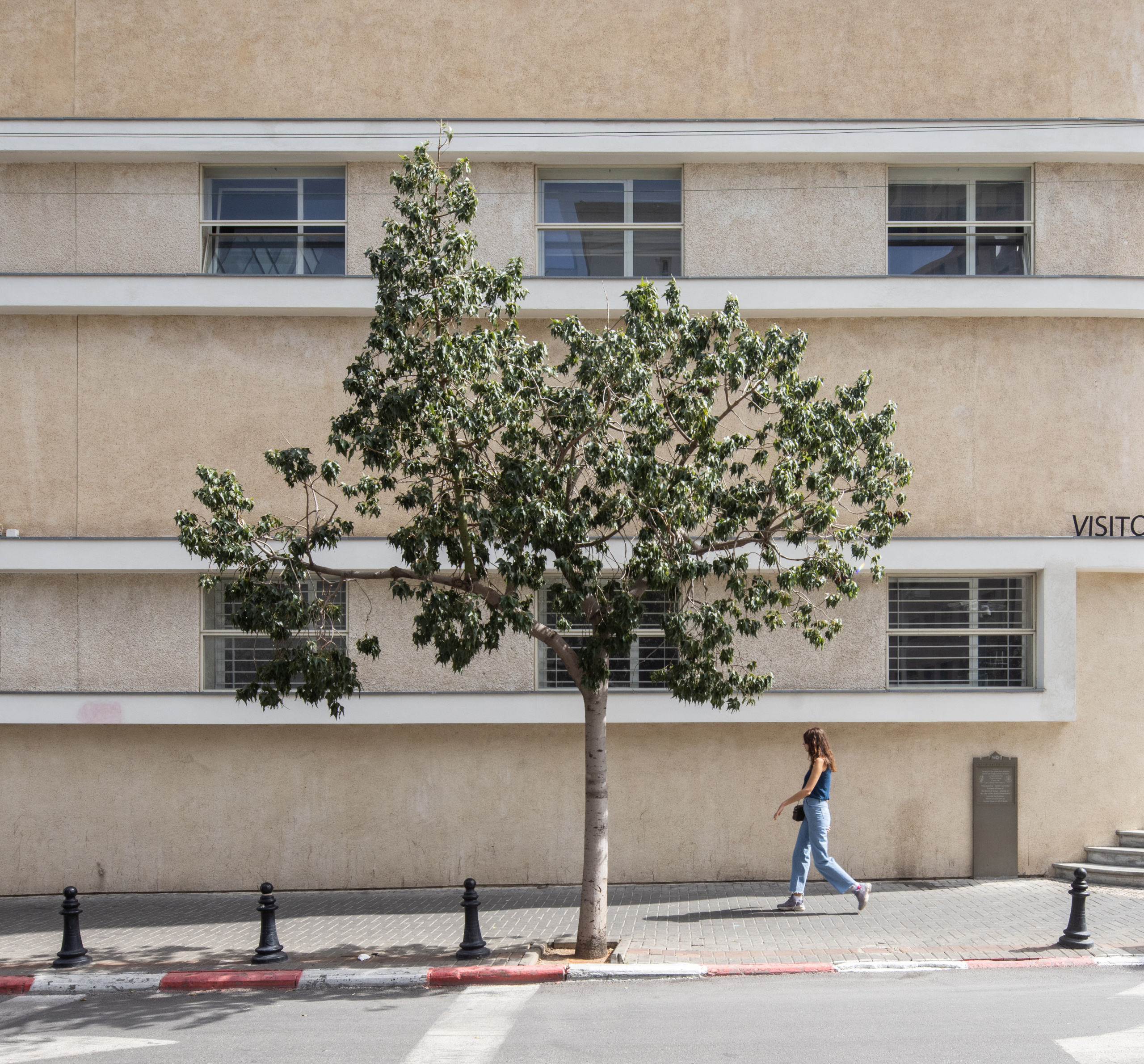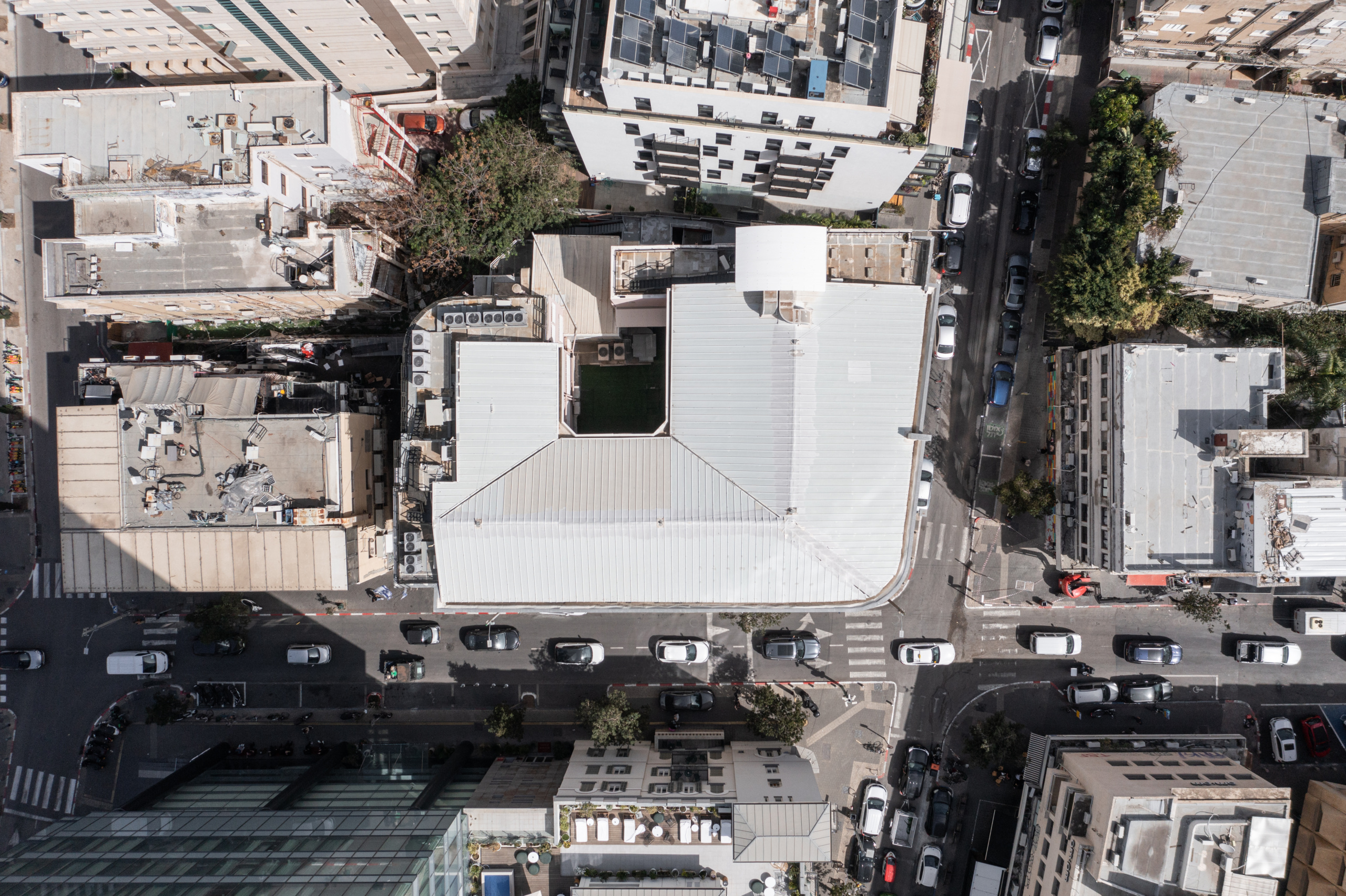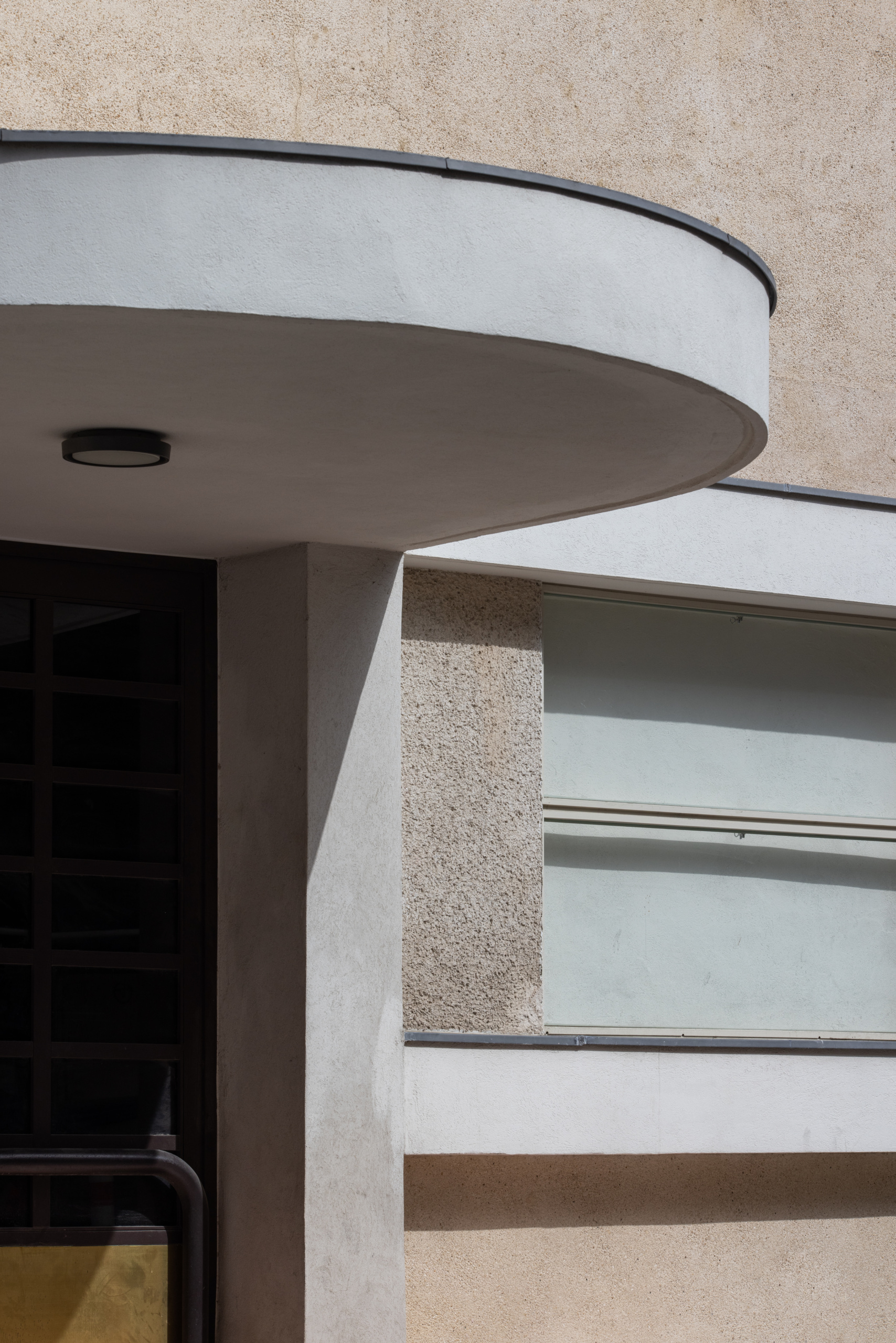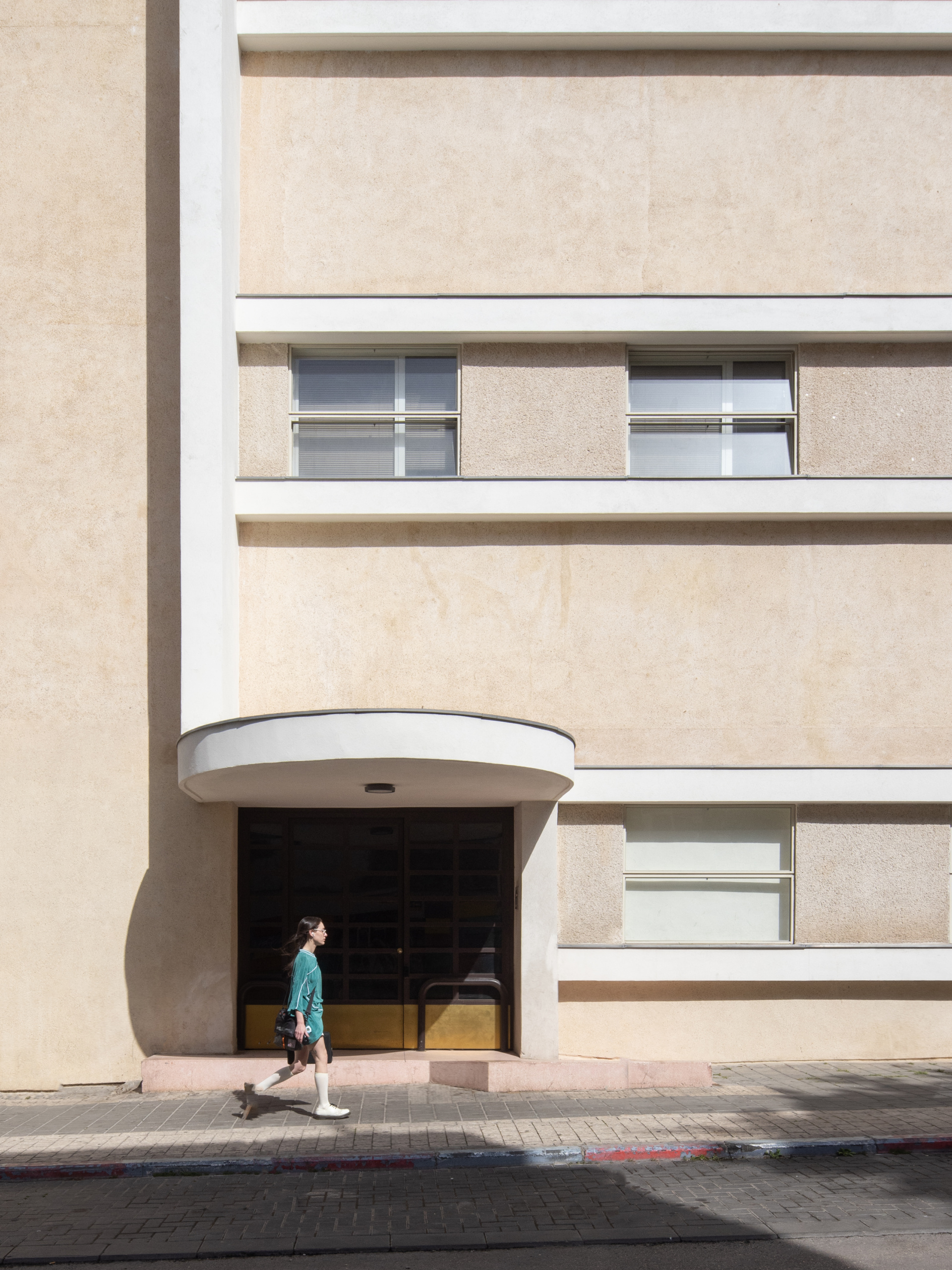
Bank of Israel
The Bank of Israel Tel Aviv office stands at the intersection of Lilienblum and Nahalat Binyamin streets. The impressive building was originally built in 1923 at the initiative of Shlomo Feingold with the aim of serving as the Tel Aviv Post and Telegraph House. Initially, the building was designed by Architect Yitzhak Schwartz in the Romantic Style (known in Israel as the Eclectic Style) with a spire and various decorative elements.
In the 1930s, the building was purchased by Ashrai Bank and renovated according to the design of Arch. Dov Koczynski in the International Style. The change was dramatic and effectively transitioned the building to the modernist style.
the bank dispensed credit services to many of the urban development plans for Tel Aviv in that period. The building is part of a cluster of banks that make up the historical banking complex of Tel Aviv and is surrounded until today by the management offices of several major banks in Israel.
During the British Mandate, the building housed the income tax offices of the Mandate authorities and in 1944 the building was a target of an operation executed by the Etzel in which the offices were partially damaged.
Since 1956, the building has been in ownership of the Bank of Israel, housing bank offices and incorporating a visitors center that presents the Bank’s main functions and its contribution to the economy of the State of Israel. In the 1960s a fourth floor was added to the building and in the 1990s an additional corner entrance was opened.
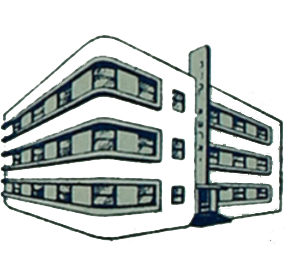
The façade is interposed by horizontal elements of the building framing the windows on each floor in a continuous horizontal relief. Additionally, a vertical element perpendicular to the building adds distinction, rising from the roof of the original entrance door to the height of the building and beyond.
Parts of the original building were destroyed in the 1930s while portions were assimilated into the modernist building designed in the International Style. Later additions including a fourth floor and corner entrance were done so with consideration to the historic style. Even so, the facades were badly in need of repair and all details and framing needed to be entirely reconstructed. The building was designated for conservation and the facades would undergo restoration according to the design of Koczynski in the International Style.
